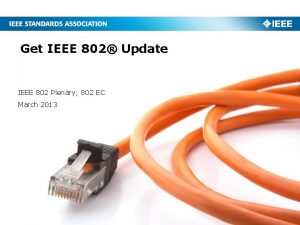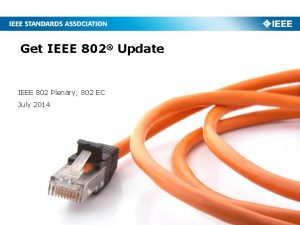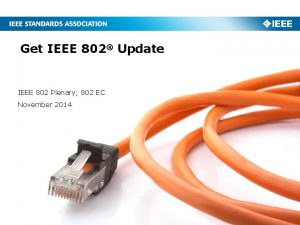IEEE 802 3 Po E The Po E






- Slides: 6

IEEE 802. 3 Po. E

The Po. E System and Current • PSEs have two current limits, Icut and Ilim • Icut – PSE may shut power off • Reached when PD draws more than advertised class for more than 75 ms • Ilim – PSE shall shut power off • Reached when PD draws exceeds advertised class by a percentage for a duration • Percentage and duration varies by class (both get smaller as class increases)

Limited Fault Power • These current limits are chosen to ensure compliance to safety standards (60950 moving to 62368) • IEEE Std 802. 3 attempts to simplify the comprehension of the limits by including an ‘upperbound template’

Upperbound Template The upperbound template is a graphical representation of the current limits. Green is operational area, white is may shut off and red is shall shut off. A Type 4 PSE may source up to 1. 75 A for up to TCUT max (75 ms), with a 750 ms error delay before the PSE can apply power. Picture Source: https: //ethernetalliance. org/wp-content/uploads/2018/04/WP_EA_Overview 8023 bt_FINAL. pdf

Auto Restart • The PSE moves back to detection after shutting off power to the port • If the PD presents valid detection and classification signatures and falls within the startup inrush current limits, power will be reapplied • The PSE has error delay timing that requires a 750 ms delay before subsequent powering attempts, limiting the duty cycle of any error event to less than 10% • Customers do not want to manually intervene for overload

Intent of IEC 60364 -7 -716 • Is the intent to disallow lower current limits that can self reset even when a higher overcurrent protection (non-resettable) is present? • The current text can be read to disallow this • It can also be interpreted to allow this The protection against thermal effects and overcurrent shall be achieved by at least one of the three following principle measures: - use of a protective device to disconnect any overcurrent in the circuit conductors - designing the circuit so as to prevent an overcurrent to arise - limitation of overcurrent by the characteristics of supply Overload protection shall be provided by limitation of the power supply for all parallel sources of the power supply devices. The disconnection in case of overload shall be within 1 s. The circuit shall not reset automatically.










